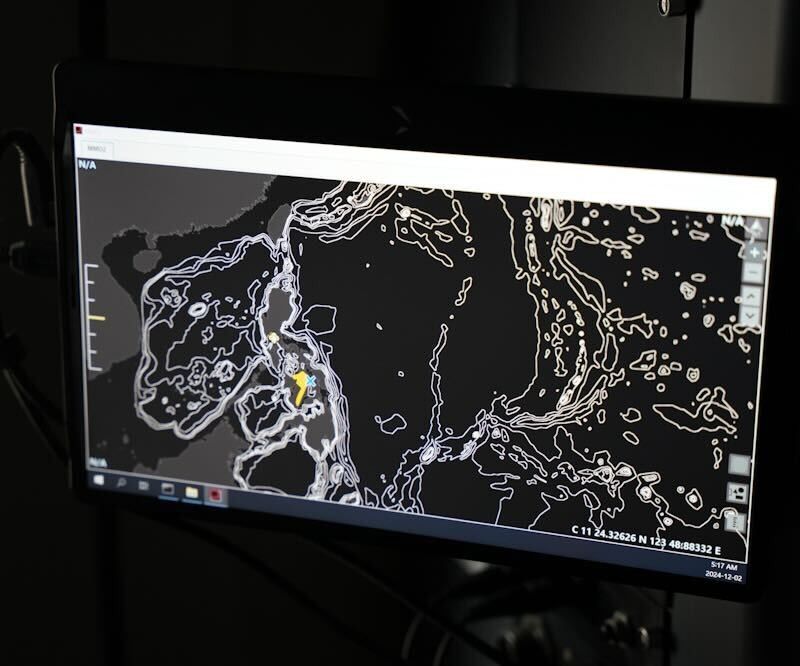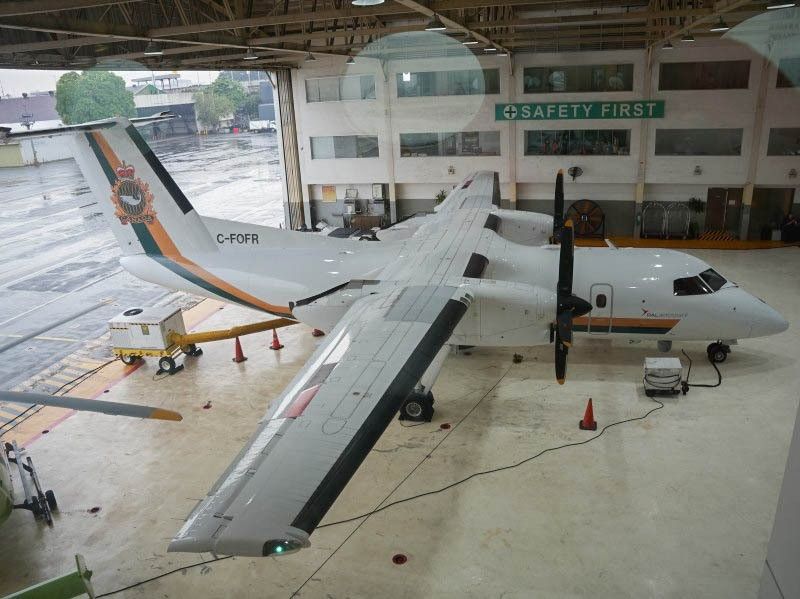MANILA, Philippines — It took just 70 hours in the air to spot what surface vessels at sea might miss in months: 88 possible violations, including ships going dark to avoid detection and destructive fishing methods wrecking Philippine marine ecosystems.
For its first deployment to the Philippines' eastern seaboard, Canada's Dash-8 surveillance aircraft covered 22,000 kilometers, its radar and cameras catching sea violations patrol boats might never see.
"Figuratively and literally this is an eye-opener for [the Bureau of Fisheries and Aquatic Resources]," Roy Ortega, officer-in-charge of the BFAR fisheries resources management division, said at a press conference on Monday, December 2.
"Before we were focused only on deploying surface assets and can only cover much, and it's very loose out in the sea. With this air asset, we were able to cover vast expanse of maritime areas in short span of time," Ortega said.
These findings came from Operation Bantay Lawud (sea guardian) — a two-week joint aerial patrol and capacity-building mission launched by Canada's fisheries department with BFAR on November 13. The findings of the joint patrol were shared with reporters on Monday.
The operation found about 88 possible illegal, unreported and unregulated fishing activities (IUU) in Philippine waters and the high seas.
 Canada's Dash-8 aerial surveillance aircraft is parked in Manila on Dec. 2, 2024 as part of Canada's aerial surveillance operation in the Philippines in partnership with the Philippine government.
Philstar.com / Martin Ramos
Canada's Dash-8 aerial surveillance aircraft is parked in Manila on Dec. 2, 2024 as part of Canada's aerial surveillance operation in the Philippines in partnership with the Philippine government.
Philstar.com / Martin Ramos
For instance, in the Visayan Sea, where a fishing ban is currently in effect, the aircraft spotted 34 vessels committing potential violations.
Ortega estimates this represents at least five to 10% of the 600 commercial fishing boats registered in the area of the Visayan Sea, which supplies at least 10% of the country's fisheries output annually.
In high seas areas, or waters that lie beyond the boundaries of any nation, the aircraft spotted 50 more possible violations, including fishing in closed areas, unregistered vessels, use of illegal gear, and failure to be properly marked. This figure is a "high number," Sean Wheeler, chief of the international enforcement of conservation and protection of Canada's fisheries department, said.
"That's part of the reason why we're here. We're working really closely with BFAR to get more surveillance assets out there to understand the levels of IUU, and effectively to deter IUU fishing from happening," Wheeler said.
The operation also caught several vessels trying to evade detection by switching off their monitoring systems – commonly known as "dark vessels."
"Dark vessels are typical around the world," Wheeler said. "When a master of the vessel turns that [monitoring system] off, that's typically when we see bad behavior happen."
 This photo shows one of the screens inside Canada's Dash-8 aerial surveillance aircraft which provides real-time detection of dark vessels at sea.
Philstar.com / Martin Ramos
This photo shows one of the screens inside Canada's Dash-8 aerial surveillance aircraft which provides real-time detection of dark vessels at sea.
Philstar.com / Martin Ramos
Wheeler could not share which countries' vessels were caught potentially violating fishing laws. He explained that evidence is first sent privately to the concerned flag states for investigation before any findings are published by the relevant international commission.
The Canadian official also explained that these are considered potential violations because while most cases will likely end up being confirmed violations, each detection still needs verification through proper investigation.

The aerial surveillance proves particularly valuable in gathering evidence for prosecution, Philippine and Canadian officials said during the Monday press conference.
"The aircraft can first of all cover a massive amount of ocean in a short period of time, which we cannot do by vessel or standing from shore," Wheeler said.
"So the aircraft right away gives us an advantage to be able to cover a large portion of the ocean quickly. On board we have technology such as radar, which can scan a very large swath of ocean on each side looking for suspicious detections," he added.
The aircraft also has high-definition cameras and optical tools that can zoom in and document what's happening at sea — a "critical part" of evidence gathering in the process of prosecuting potential violators, Wheeler said.
"The aircraft is capable from a long distance to observe, to watch the types of activity that are happening [at sea] and create the evidence that we need to prosecute," the Canadian official said.
"You have the optical video, you have radar, you have all the parameters of location, time, speed, all visual to a judge or prosecutor, so it's very effective evidence. It's very difficult to refute our findings," he added.
Beyond spotting violations, the operation also strengthened regional maritime cooperation between the Philippines and Canada. Filipino fishery officers received training from their Canadian counterparts on how to conduct high seas boardings and inspections following international rules. Two officers from Palau also joined the flights to help monitor adjacent seas.
The mission, which began in Cebu and finished in Manila, focused on the eastern seaboard because both countries share responsibility over these high seas areas through the High Seas Commission – waters that "traditionally does not get a lot of surveillance," Wheeler noted.
The surveillance flights covered Fisheries Management Area (FMA) 1, spanning from the Batanes Islands down to Bicol region, and FMA 2 from Bicol down to Sarangani port, up to the Matimatihan High Seas. The operation was also specifically authorized to monitor the Visayan Sea, which is temporarily closed as part of the government's annual three-month fishing ban there.
 Canada's Dash-8 aerial surveillance aircraft (cockpit in picture) was deployed to the Philippines in Novermber 2024 to aid the Philippines in catching potentially illegal fishing activities within its waters, among others.
Philstar.com / Martin Ramos
Canada open to providing surveillance aircraft to Philippines
Canada's Dash-8 aerial surveillance aircraft (cockpit in picture) was deployed to the Philippines in Novermber 2024 to aid the Philippines in catching potentially illegal fishing activities within its waters, among others.
Philstar.com / Martin Ramos
Canada open to providing surveillance aircraft to Philippines
Following the aerial patrol, Canada expressed openness to selling similar surveillance technology to the Philippines.
"We do market this technology, we do sell this technology around the world so we are very much amenable to having conversations both G2G (government-to-government) and other venues," Canadian ambassador David Hartman said at the press conference.
 The surveillance aircraft (in picture) flew over 70 hours in high seas and in Philippine waters. The Canadian Embassy in Manila gave local journalists a tour of the aircraft on Dec. 2, 2024.
Philstar.com / Martin Ramos
The surveillance aircraft (in picture) flew over 70 hours in high seas and in Philippine waters. The Canadian Embassy in Manila gave local journalists a tour of the aircraft on Dec. 2, 2024.
Philstar.com / Martin Ramos
The ambassador described the air asset as a "force multiplier" that can significantly expand Manila's maritime monitoring capability with limited resources.
"The amount of physical space that you're able to cover with finite resources is augmented significantly," he said. "The government of Canada obviously in addition to our private sector counterparts are very interested."
Ortega said the experience was "very uplifting" for the Filipino fishery officers who conducted surveillance with the Canadian team.goplay


